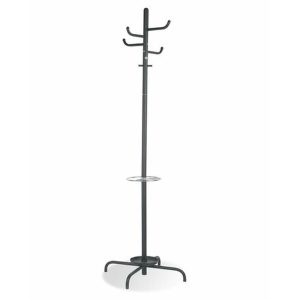Clothes racks: Versatile storage solutions for changing rooms and locker rooms
 Clothes racks provide a practical and space-efficient way to store garments in various settings, including changing rooms and locker rooms. Unlike built-in wardrobes or bulky storage units, these freestanding structures offer flexibility, easy access, and improved organization. Whether in a gym, workplace, retail space, or home, a well-designed clothes rack ensures that clothing remains neat, visible, and readily available for use.
Clothes racks provide a practical and space-efficient way to store garments in various settings, including changing rooms and locker rooms. Unlike built-in wardrobes or bulky storage units, these freestanding structures offer flexibility, easy access, and improved organization. Whether in a gym, workplace, retail space, or home, a well-designed clothes rack ensures that clothing remains neat, visible, and readily available for use.
Types of clothes racks
Clothes racks come in multiple designs to suit different needs:
- Freestanding racks – Ideal for locker rooms and changing areas, these models are easy to move and adjust based on space requirements.
- Wall-mounted racks – A great choice for maximizing space, offering stability and a sleek appearance.
- Heavy-duty racks – Built for commercial or industrial use, these options support large volumes of clothing and withstand frequent use.
- Foldable racks – Perfect for temporary or seasonal needs, providing convenience when storage space is limited.
Each type serves a distinct purpose, making it easier to maintain an orderly environment in areas where people need to change and store their clothing efficiently.
Why choose clothes racks over alternative solutions?
Compared to enclosed storage units or built-in lockers, clothes racks offer:
- Better airflow – Preventing odors and moisture buildup, especially in locker rooms where ventilation is crucial.
- Easy accessibility – Quick access to garments without the need for opening and closing doors.
- Space efficiency – Many models come with a slim profile, maximizing floor space in changing rooms.
- Adaptability – Can be moved, expanded, or adjusted to meet evolving storage needs.
For businesses, gyms, and workplaces, clothes racks provide a practical alternative to traditional storage systems, ensuring that clothing remains organized and accessible.
What to consider when choosing a clothes rack
When selecting a clothes rack for a changing room or locker room, key factors include:
- Weight capacity – Ensuring the rack can support the required number of garments without bending or collapsing.
- Material – Options like stainless steel, aluminum, or reinforced plastic offer durability and resistance to moisture.
- Mobility – Some models come with wheels for easy repositioning, while others offer a fixed structure for stability.
- Size and configuration – Matching the dimensions to the available space while considering the number of users.
- Design and aesthetics – Choosing a style that complements the overall look of the room while maintaining functionality.
By selecting the right clothes rack, businesses and individuals can create a more organized and efficient environment in any changing room or locker room, ensuring a seamless experience for users.
 Clothes racks provide a practical and space-efficient way to store garments in various settings, including changing rooms and locker rooms. Unlike built-in wardrobes or bulky storage units, these freestanding structures offer flexibility, easy access, and improved organization. Whether in a gym, workplace, retail space, or home, a well-designed clothes rack ensures that clothing remains neat, visible, and readily available for use.
Clothes racks provide a practical and space-efficient way to store garments in various settings, including changing rooms and locker rooms. Unlike built-in wardrobes or bulky storage units, these freestanding structures offer flexibility, easy access, and improved organization. Whether in a gym, workplace, retail space, or home, a well-designed clothes rack ensures that clothing remains neat, visible, and readily available for use.